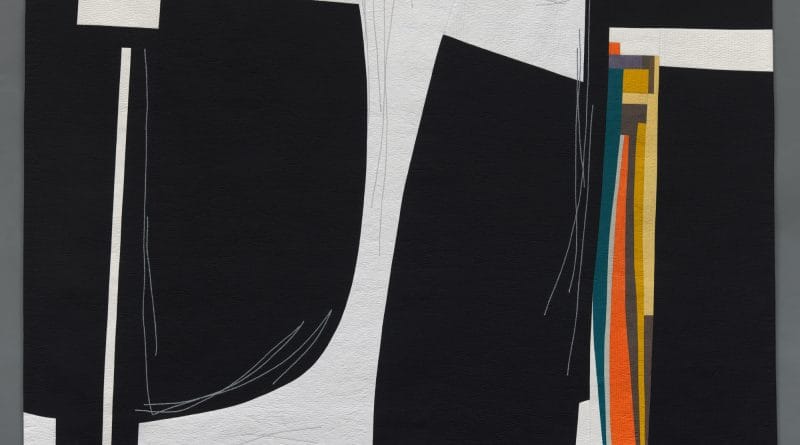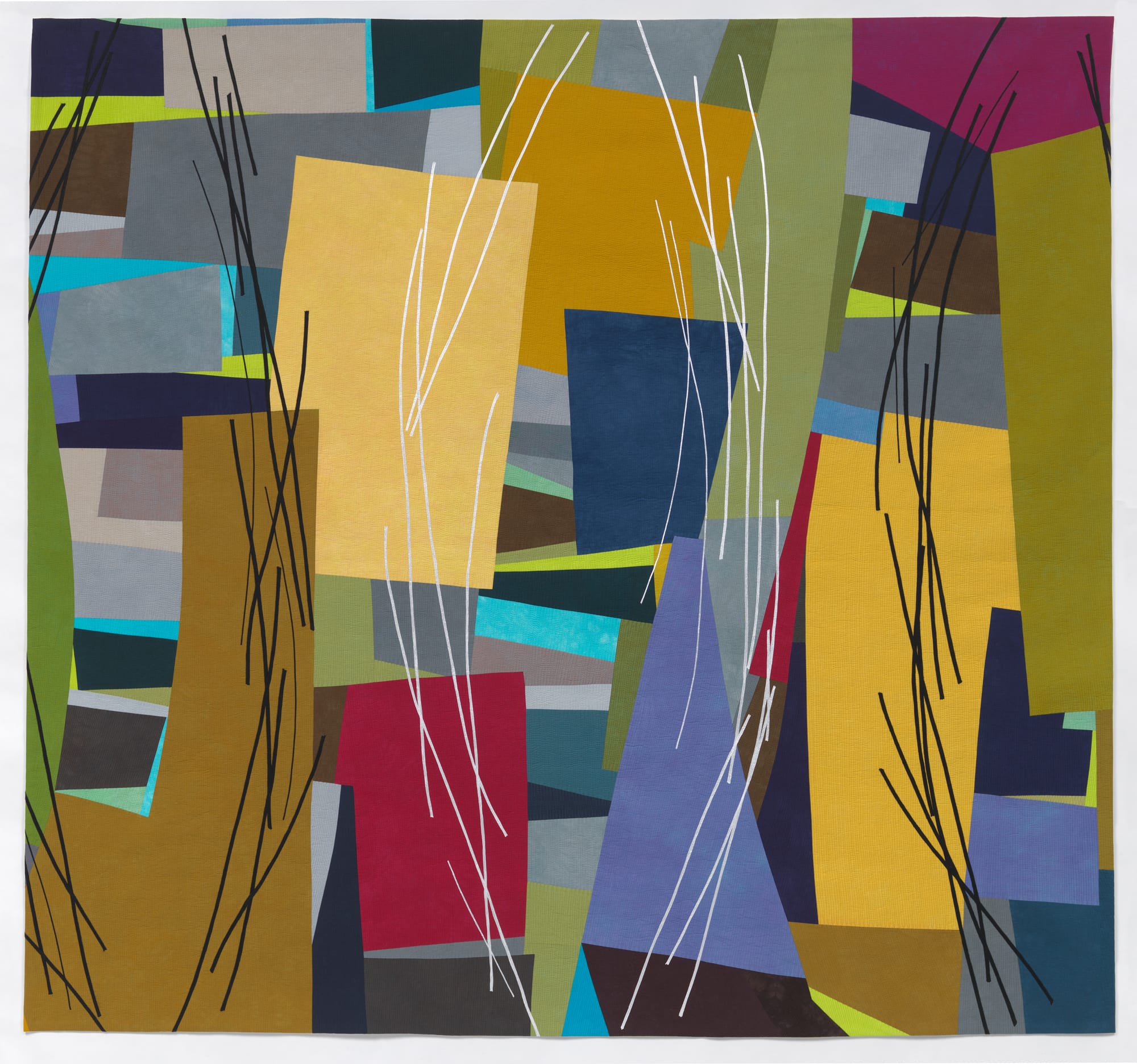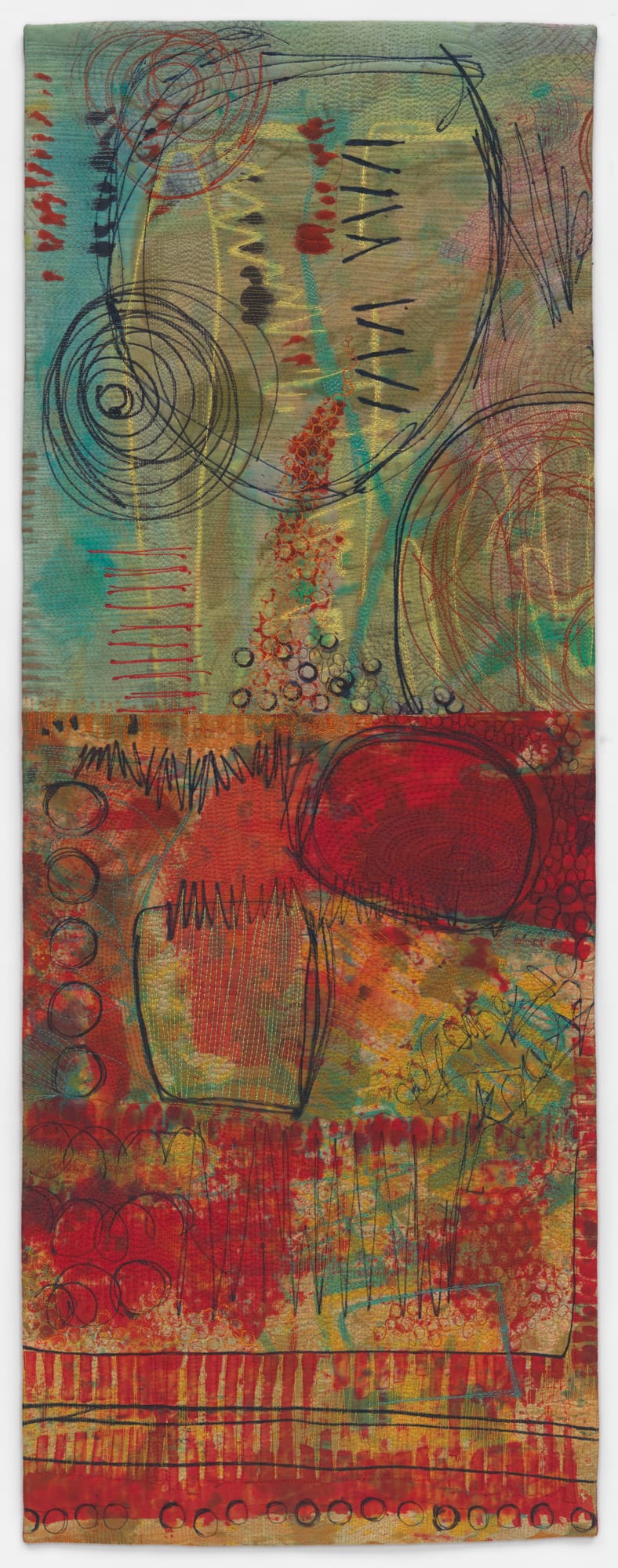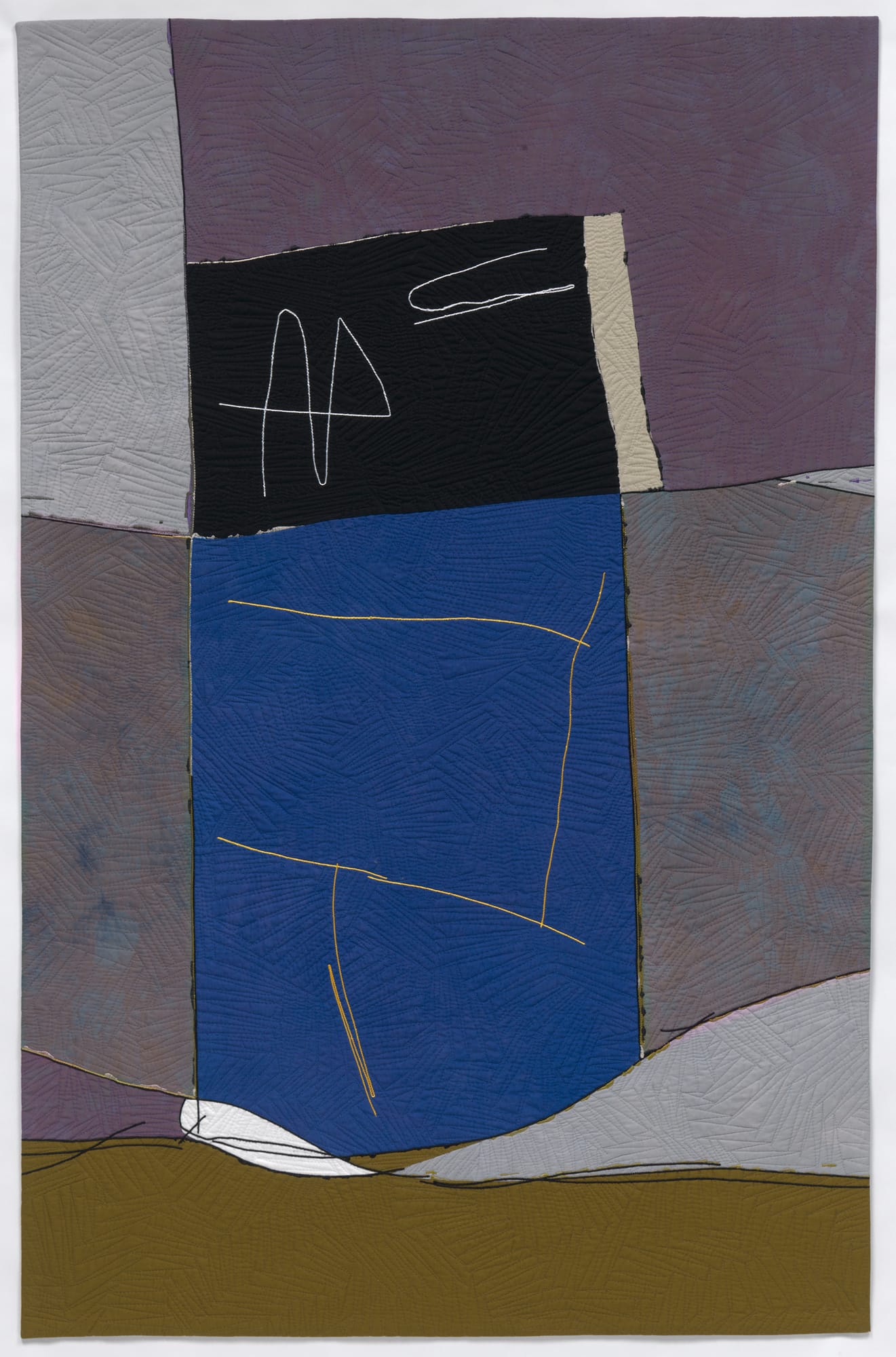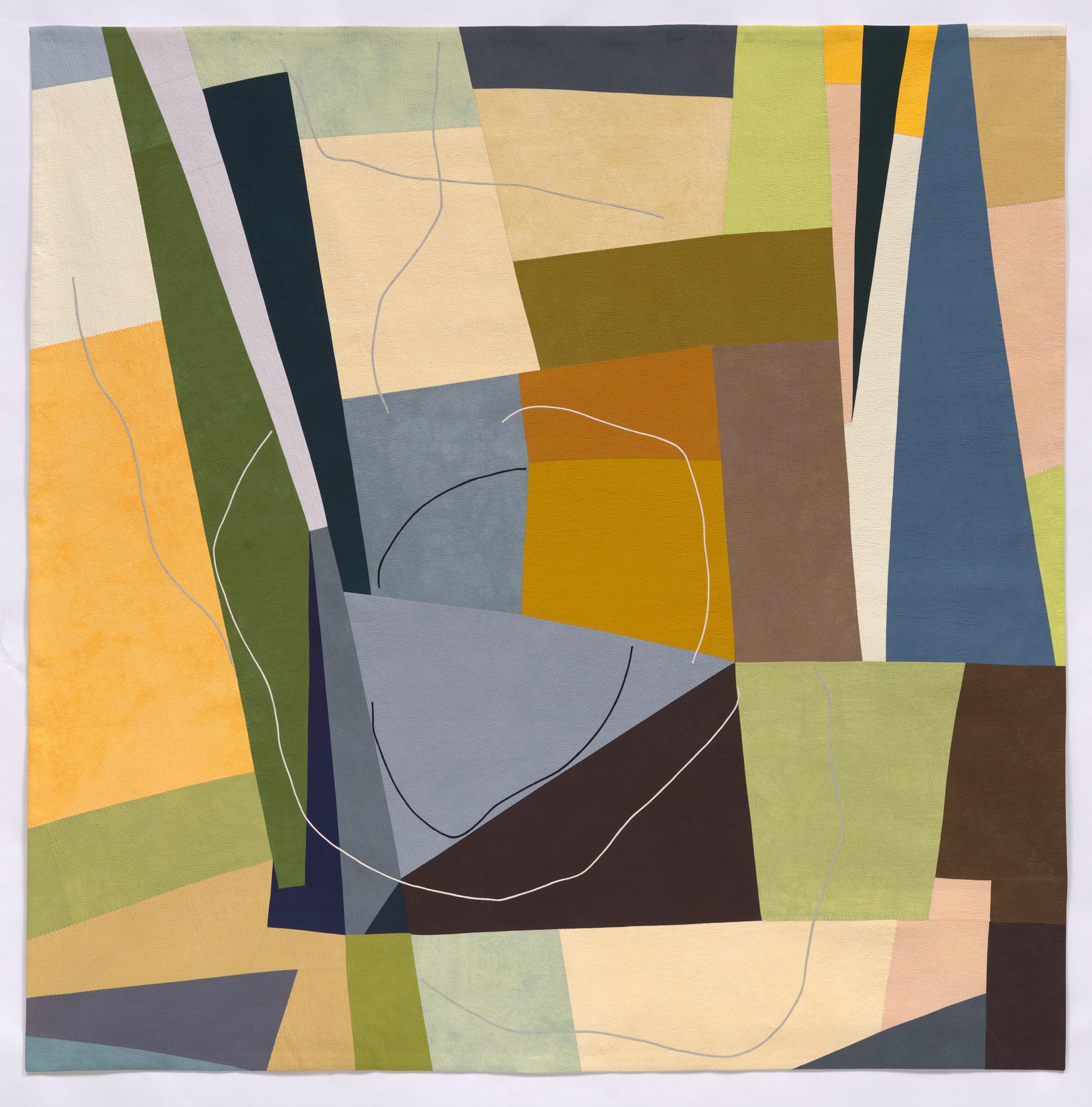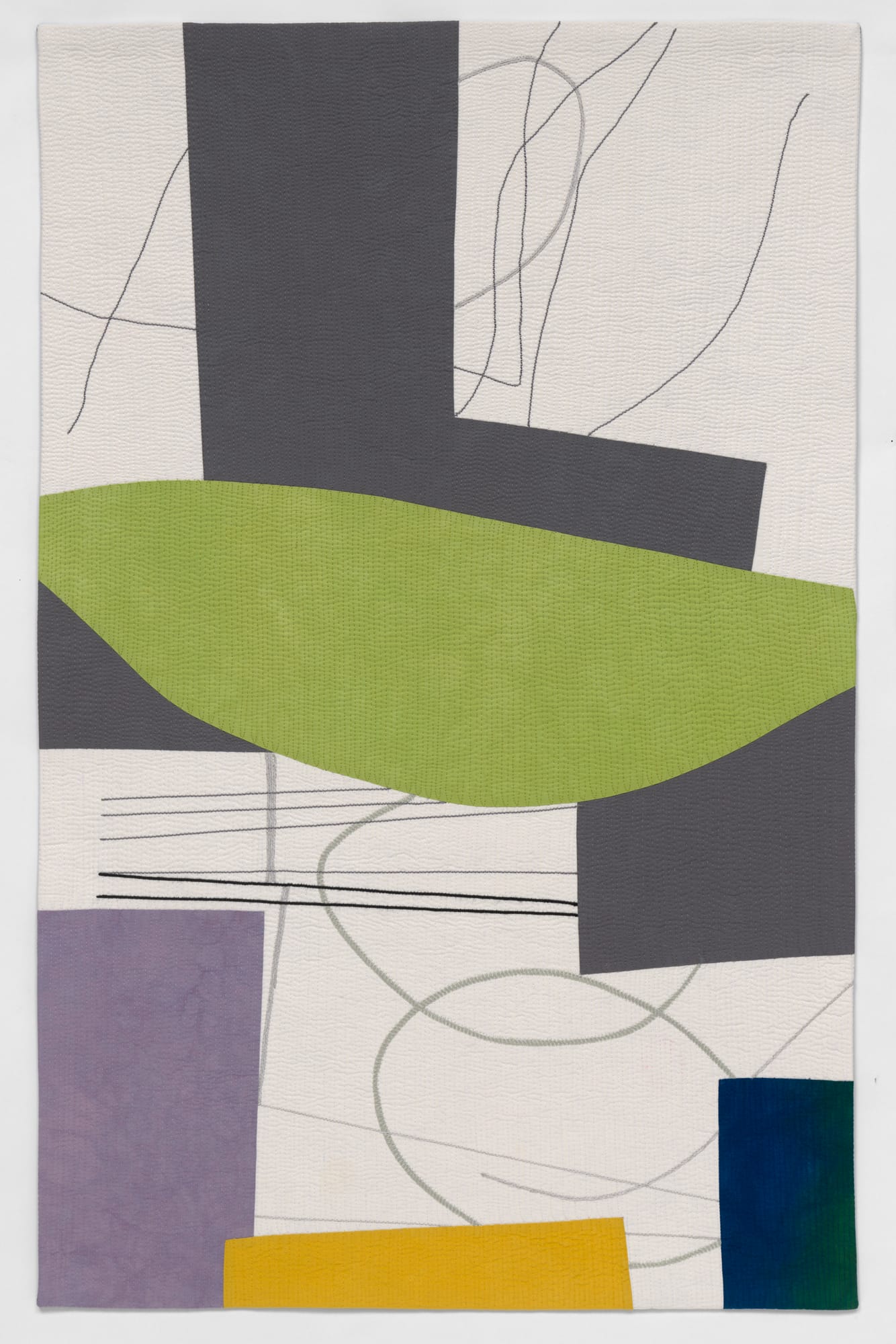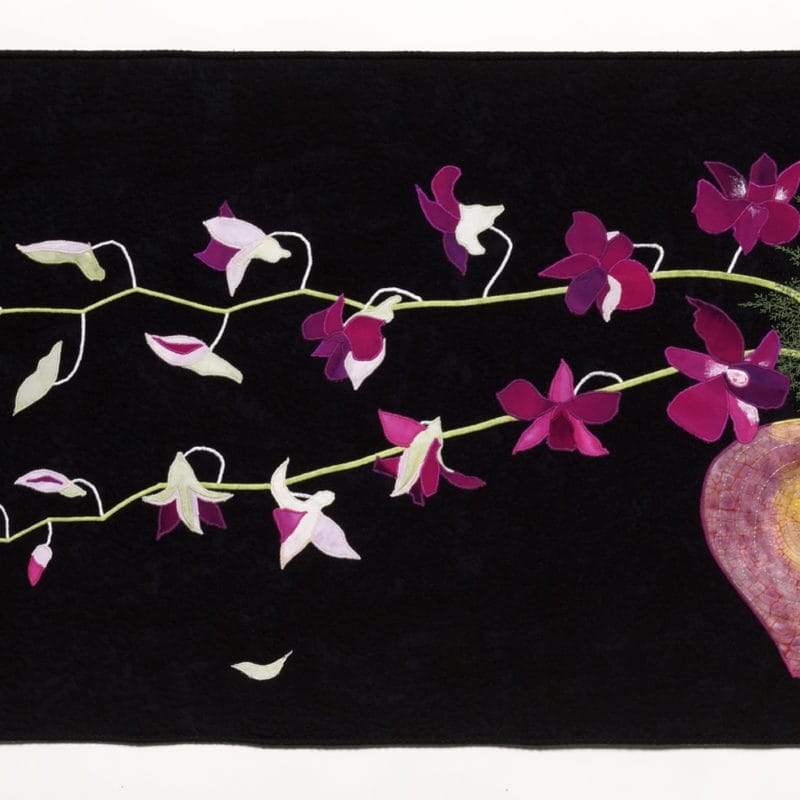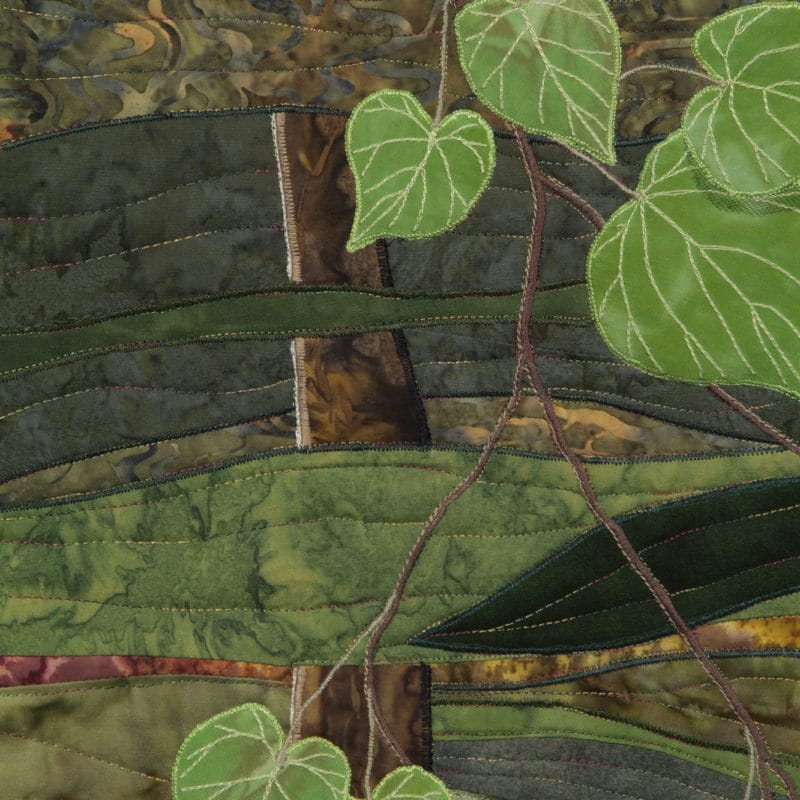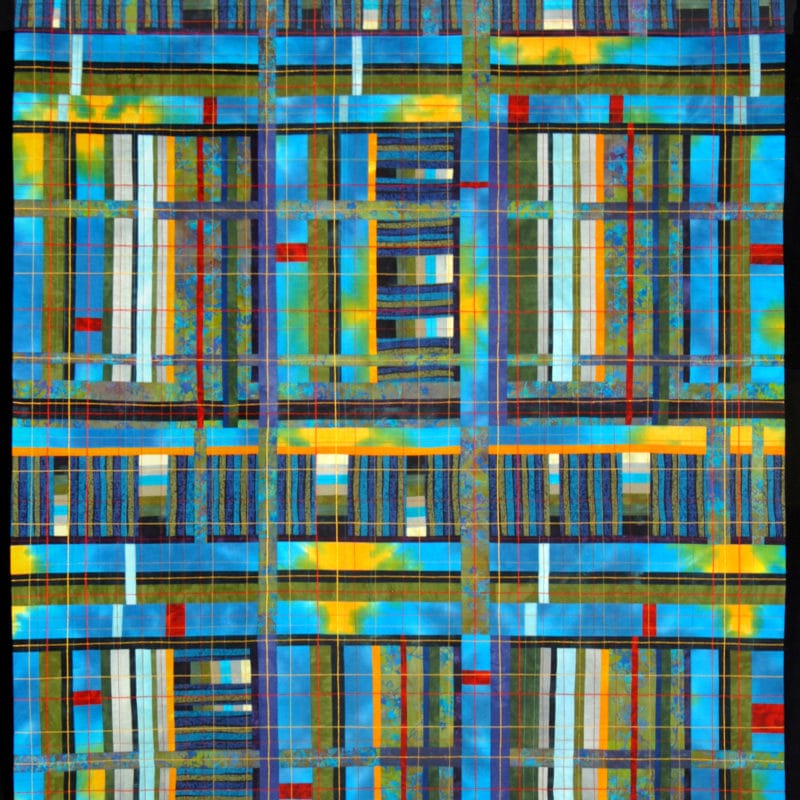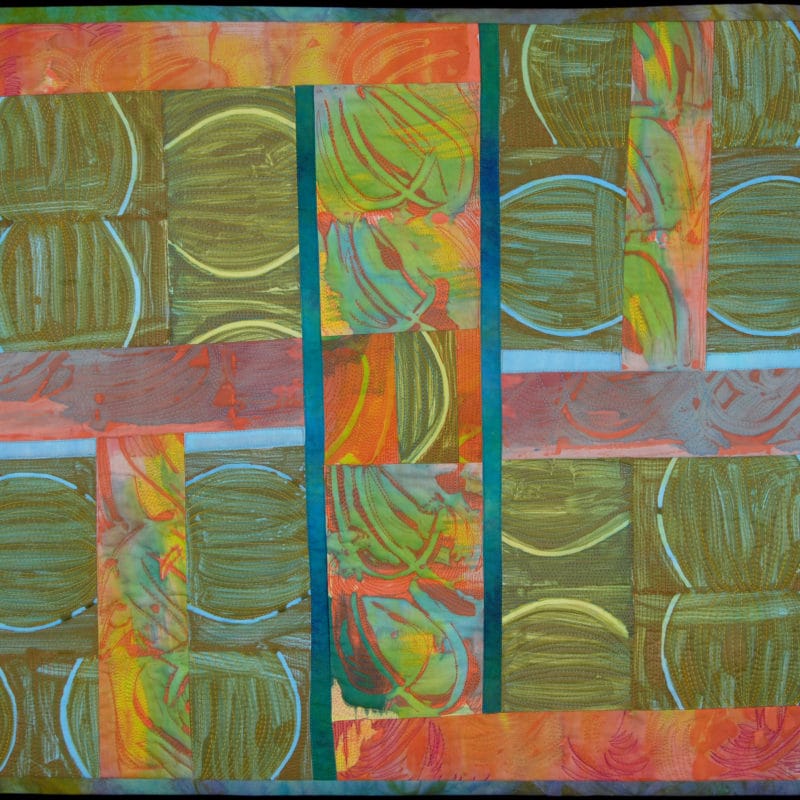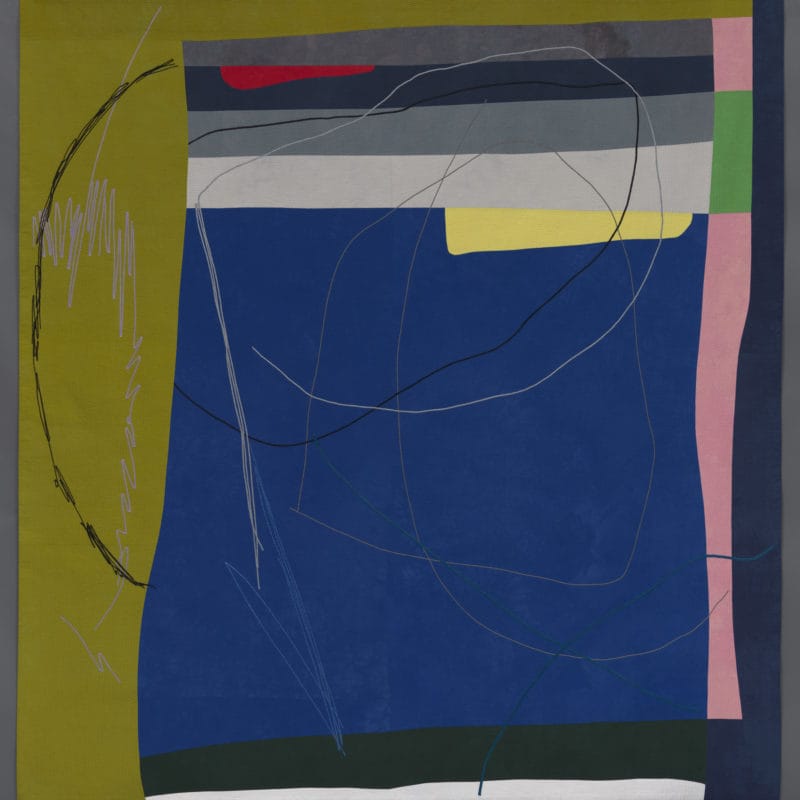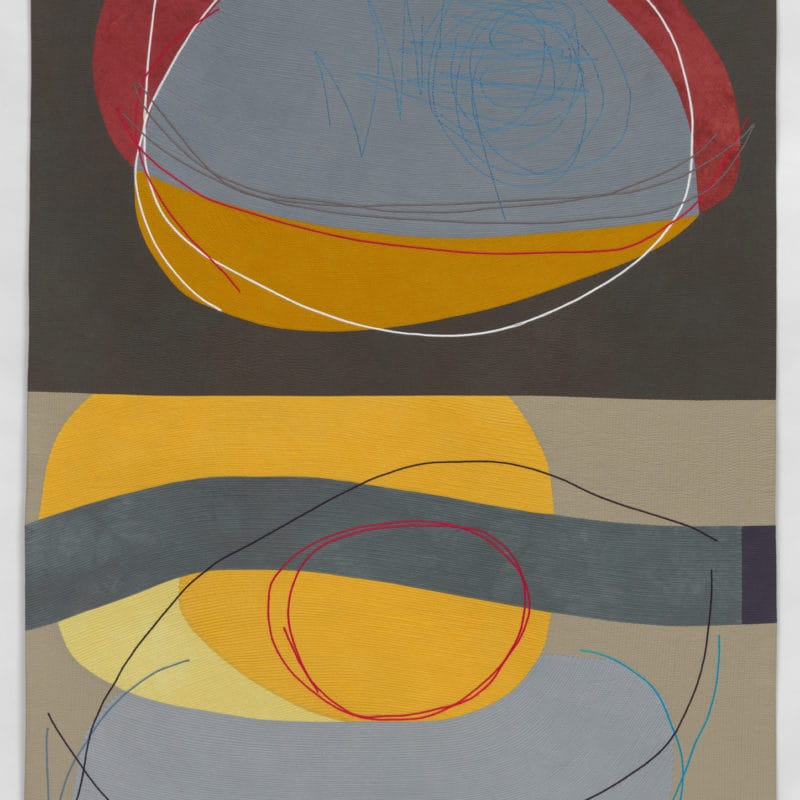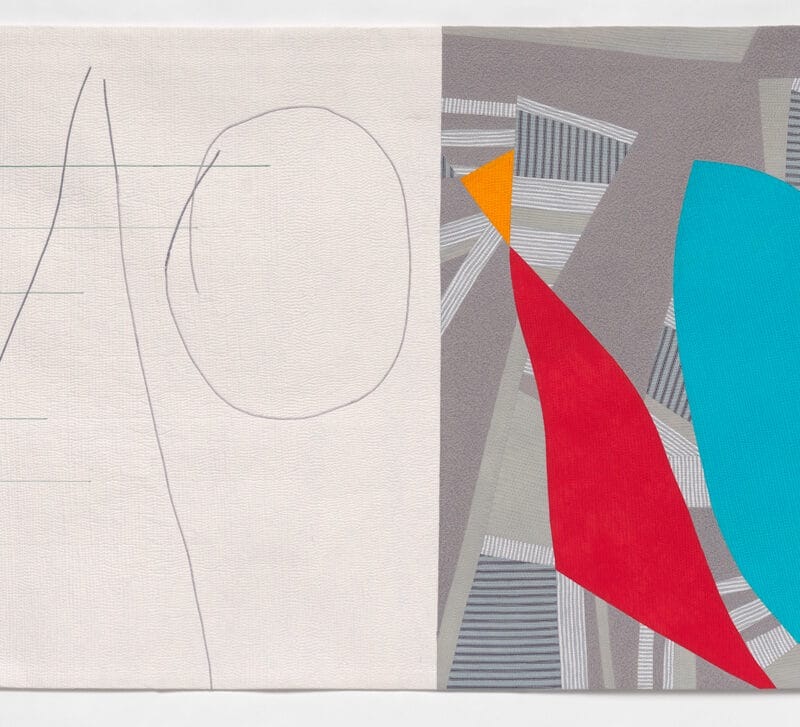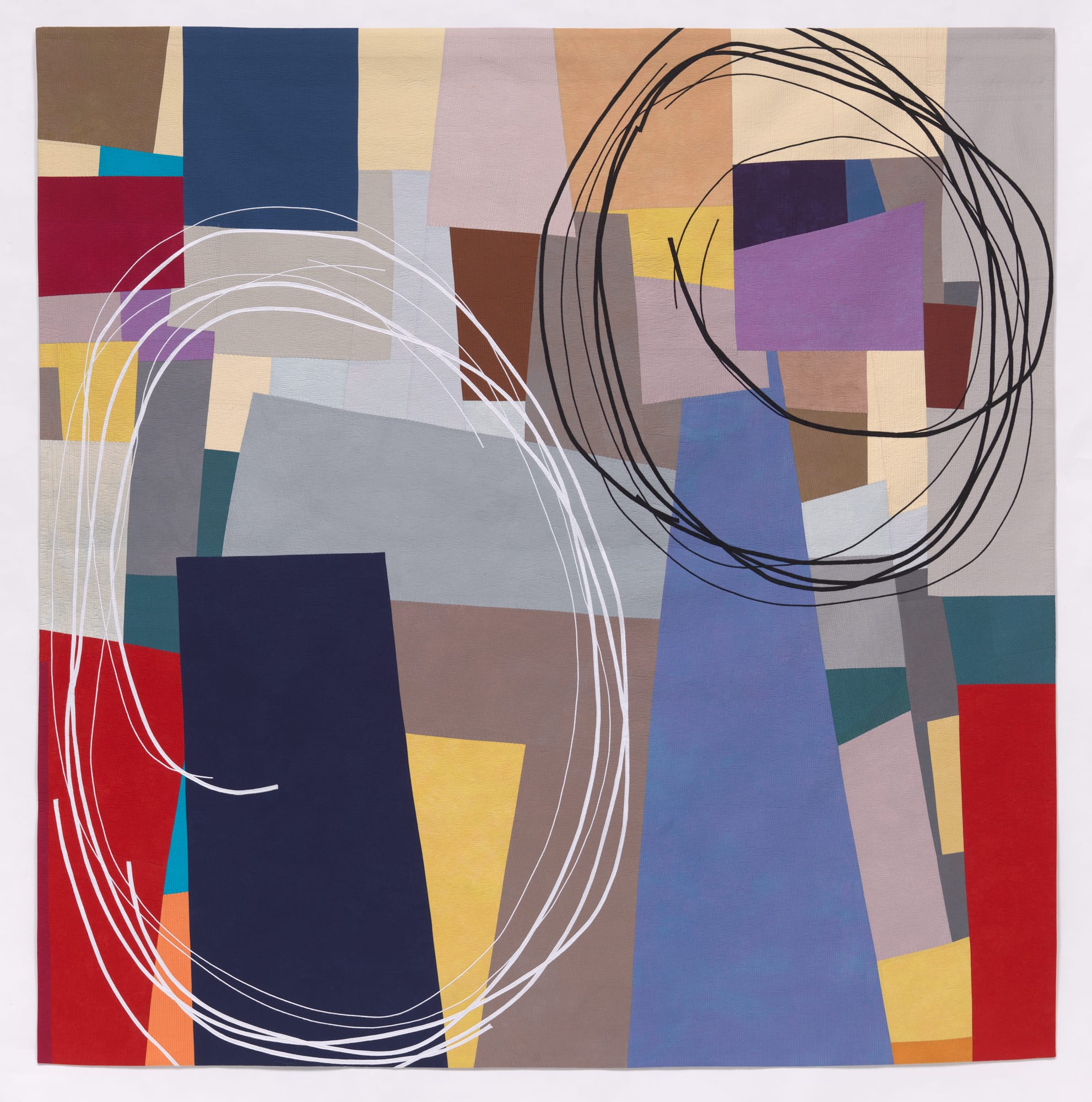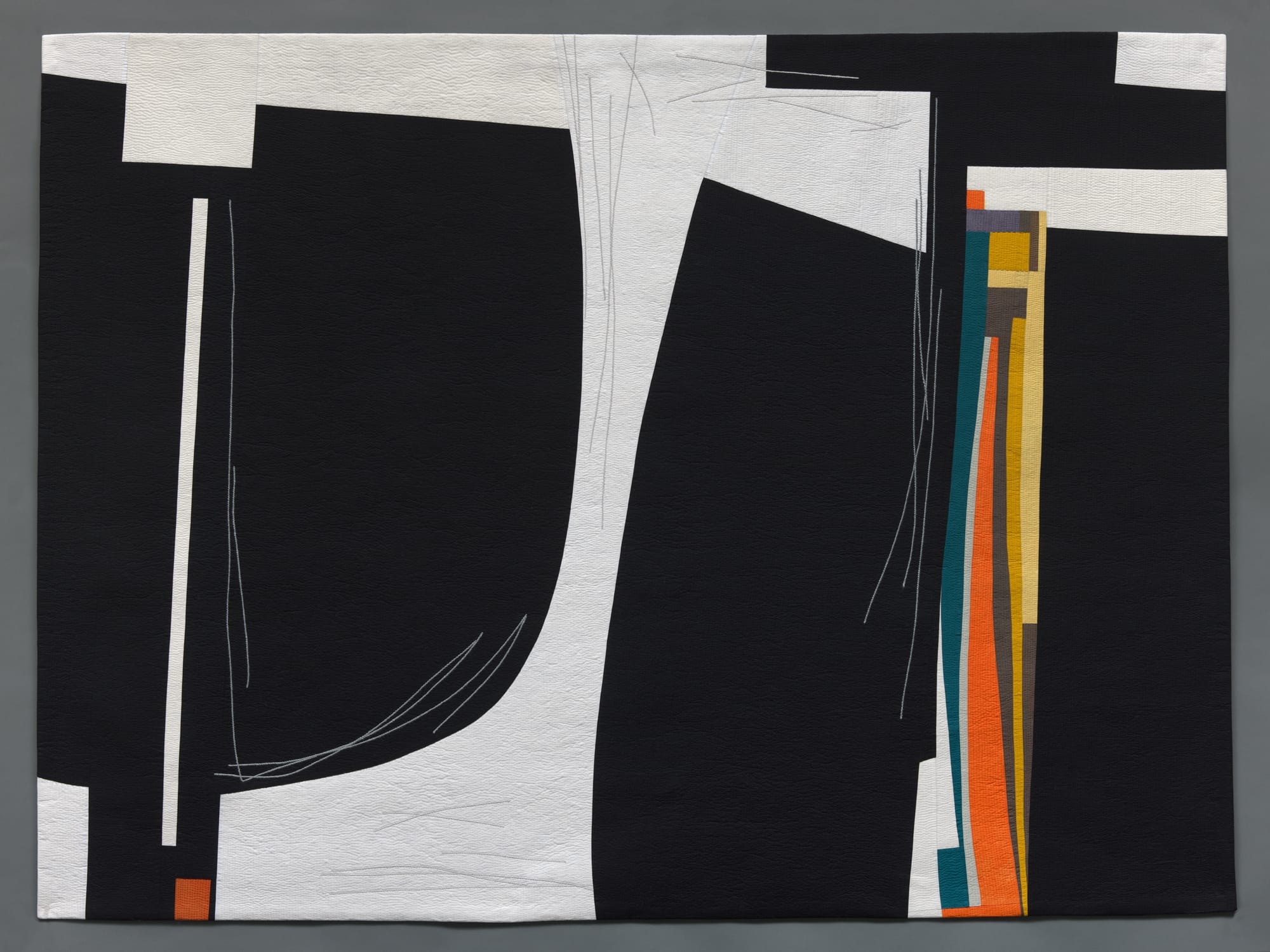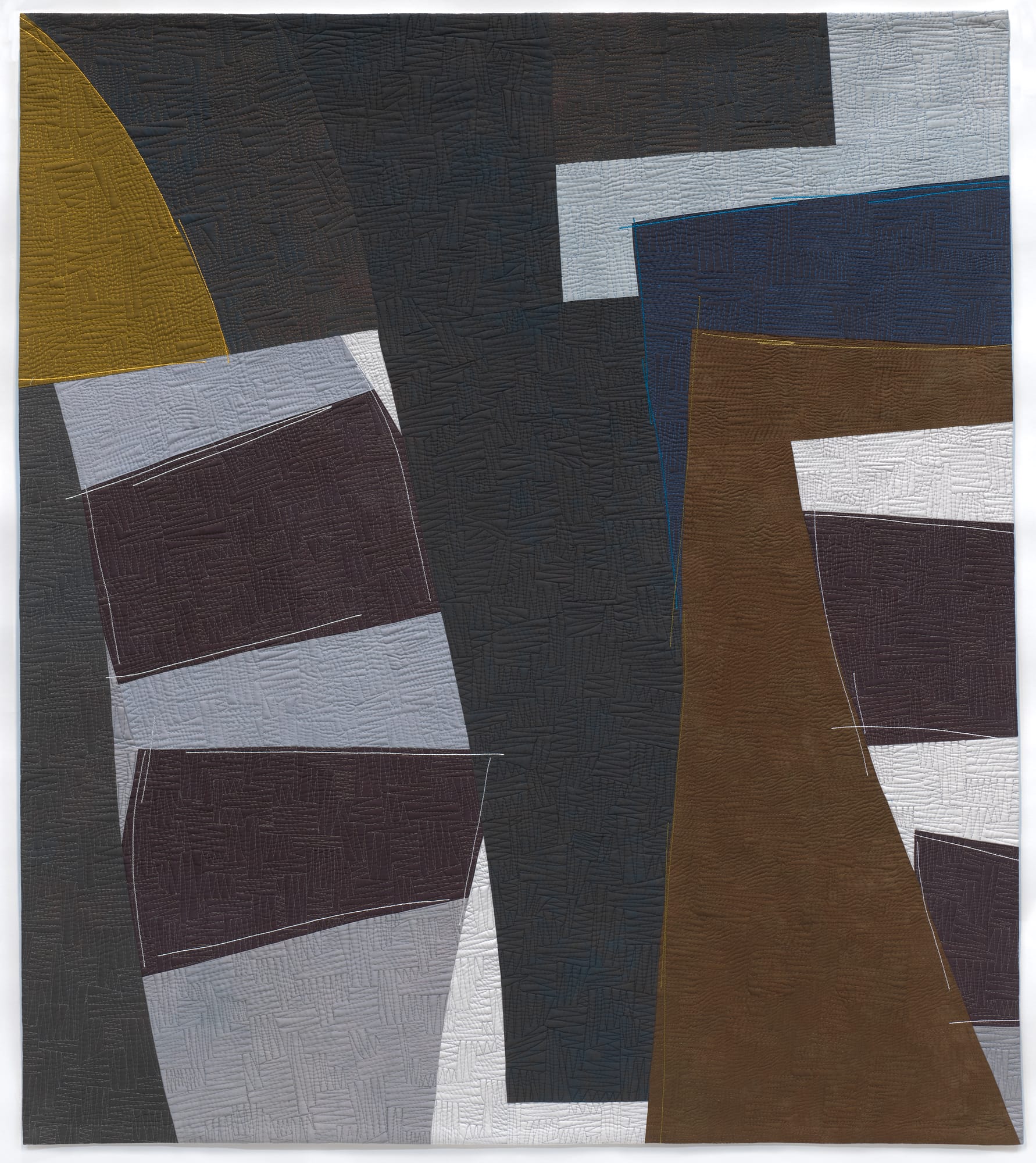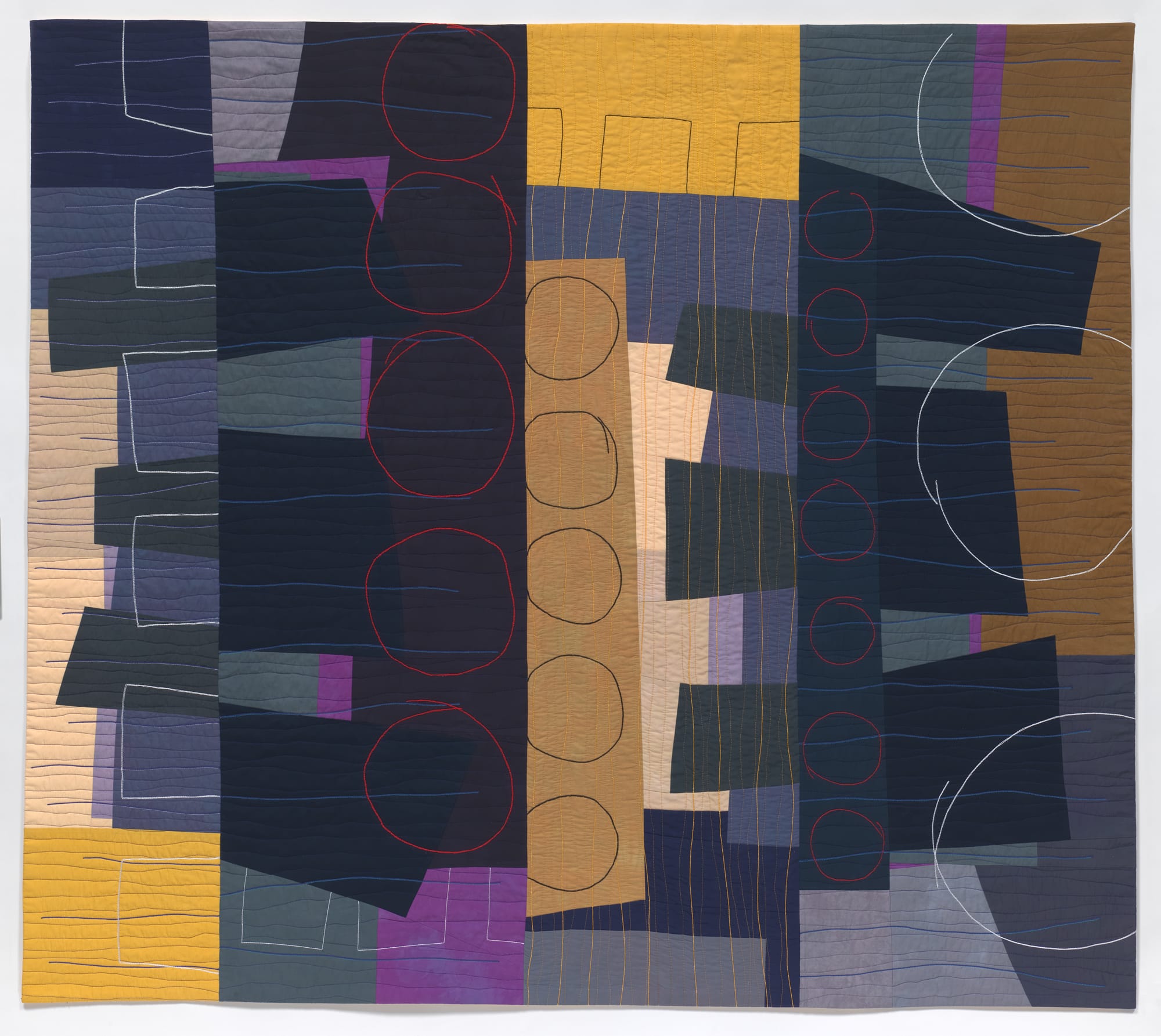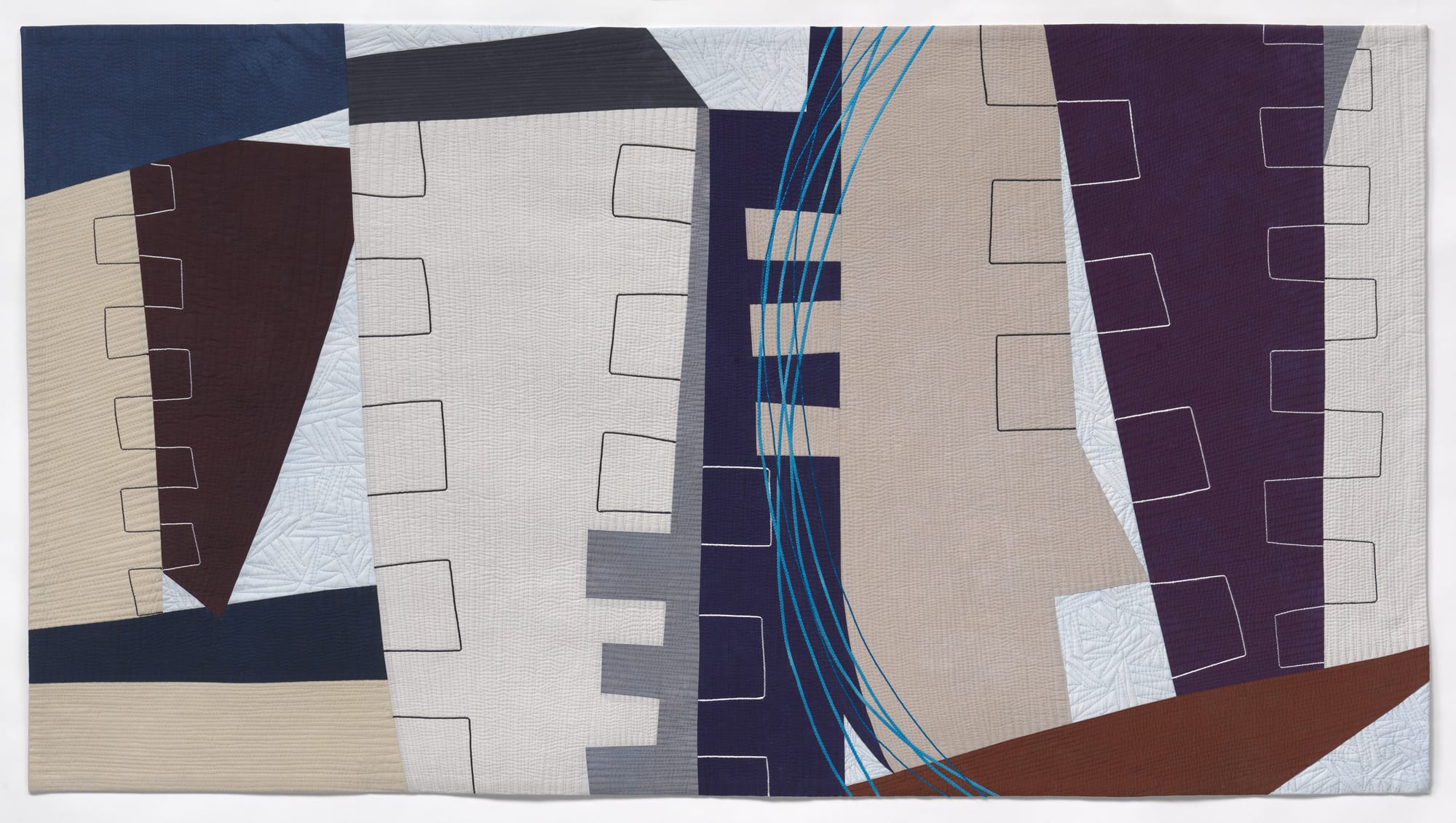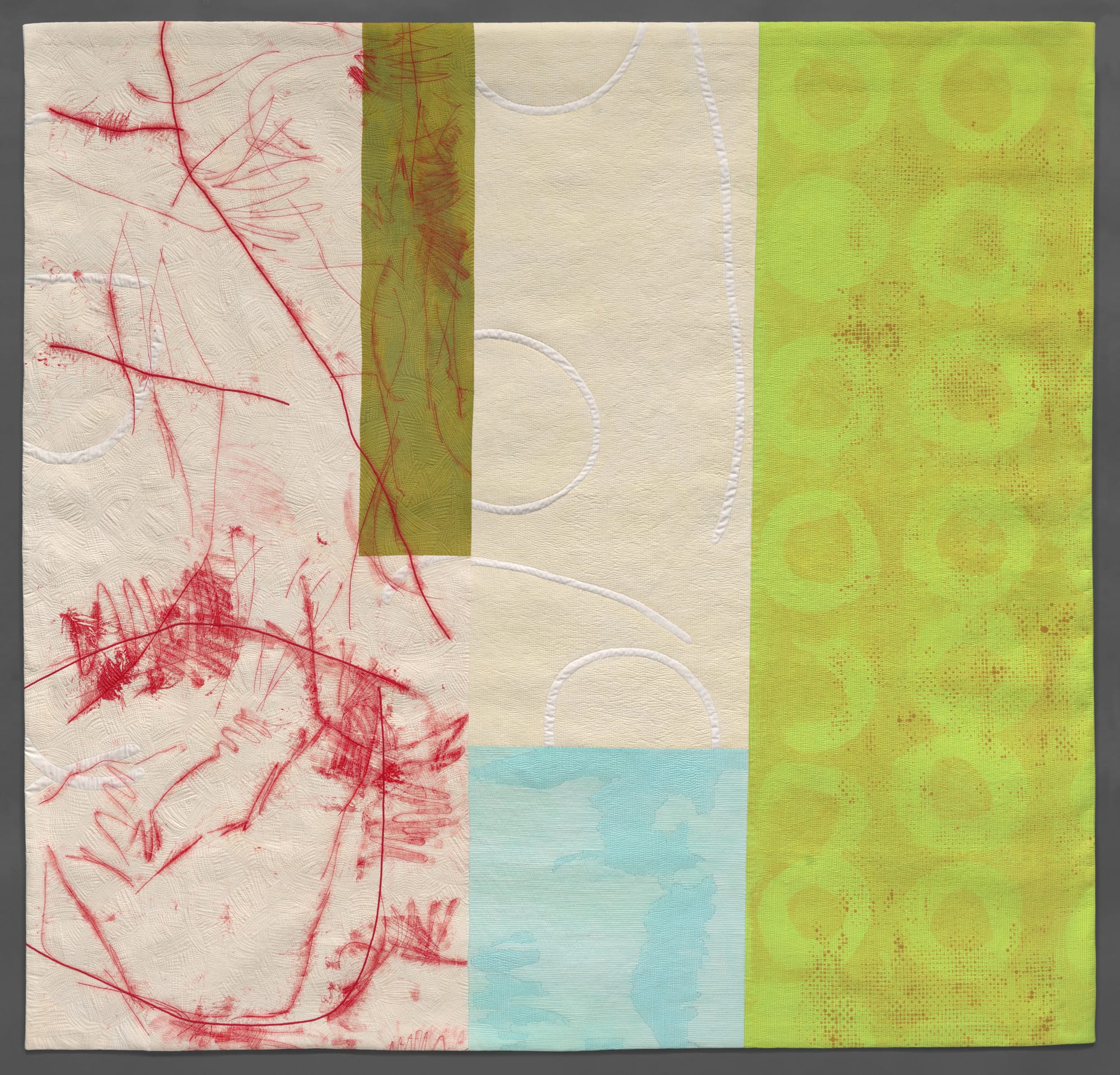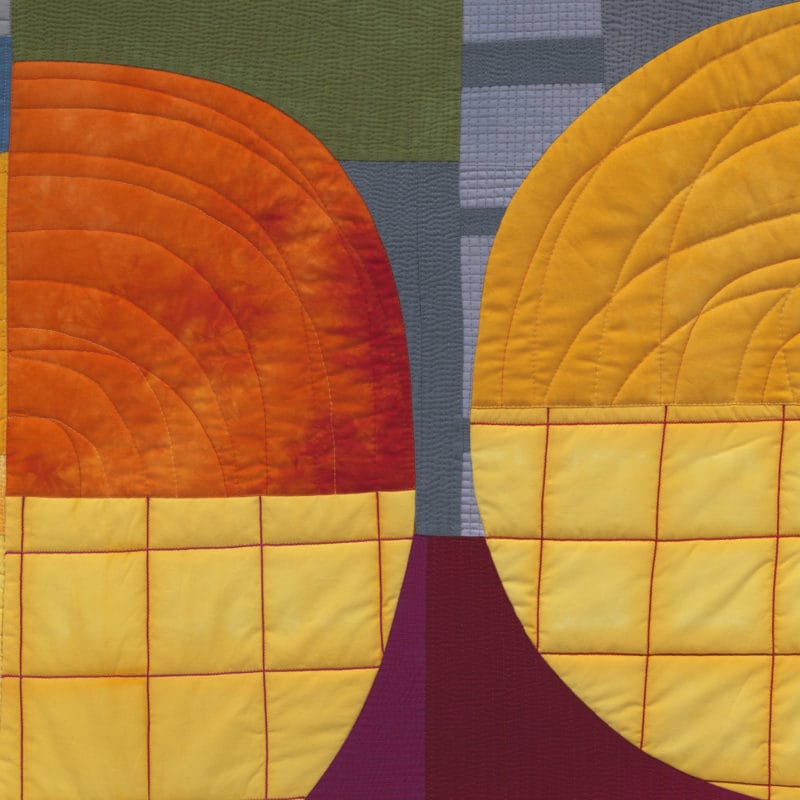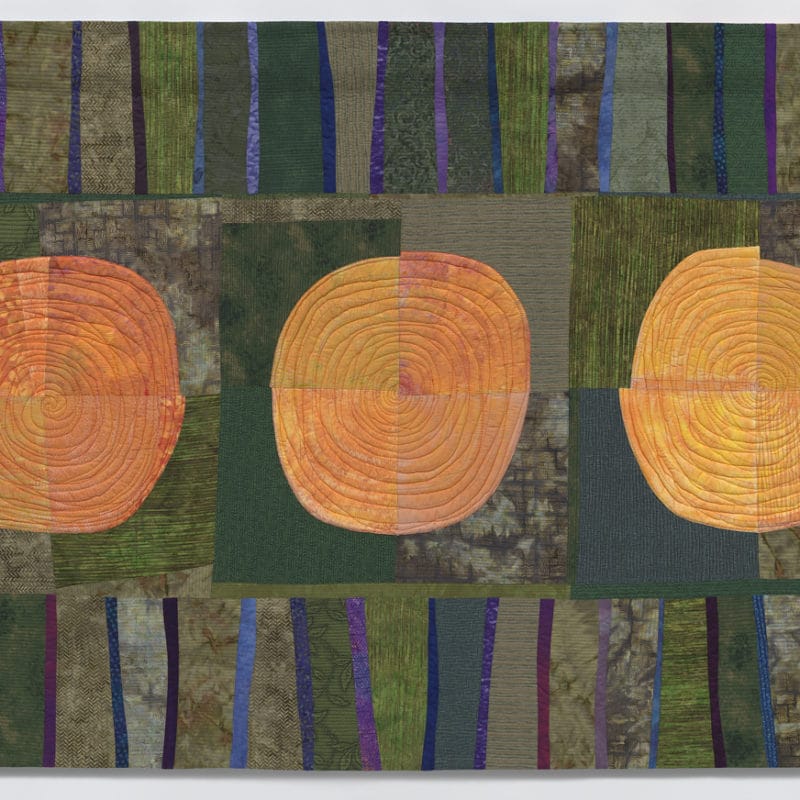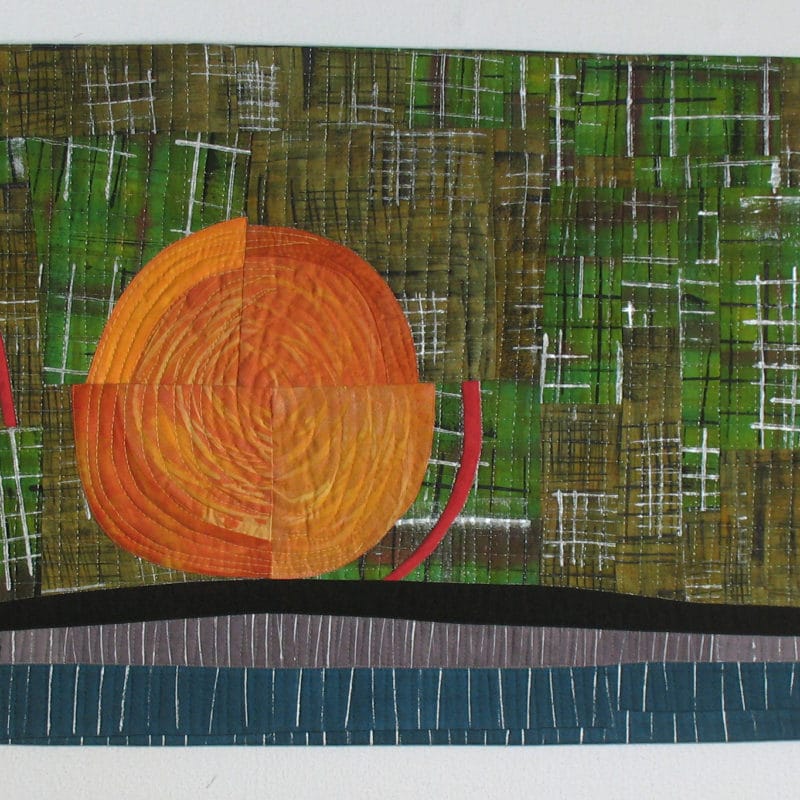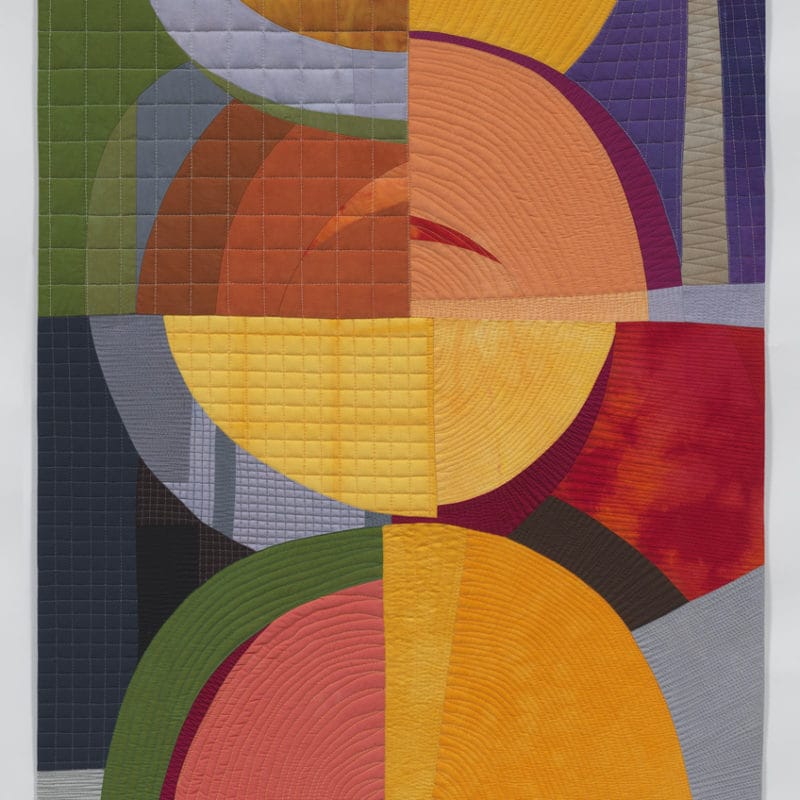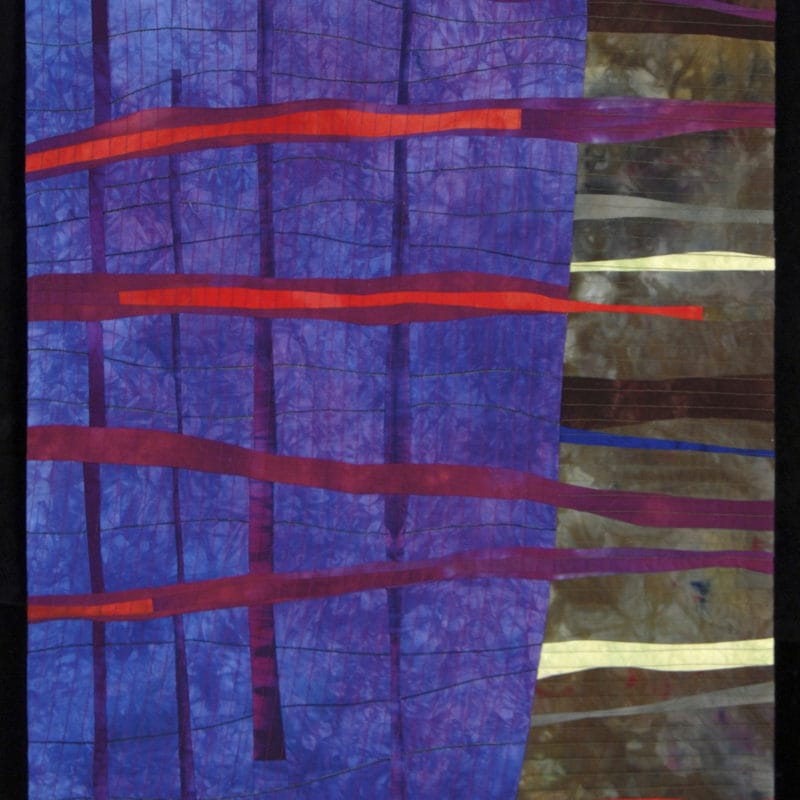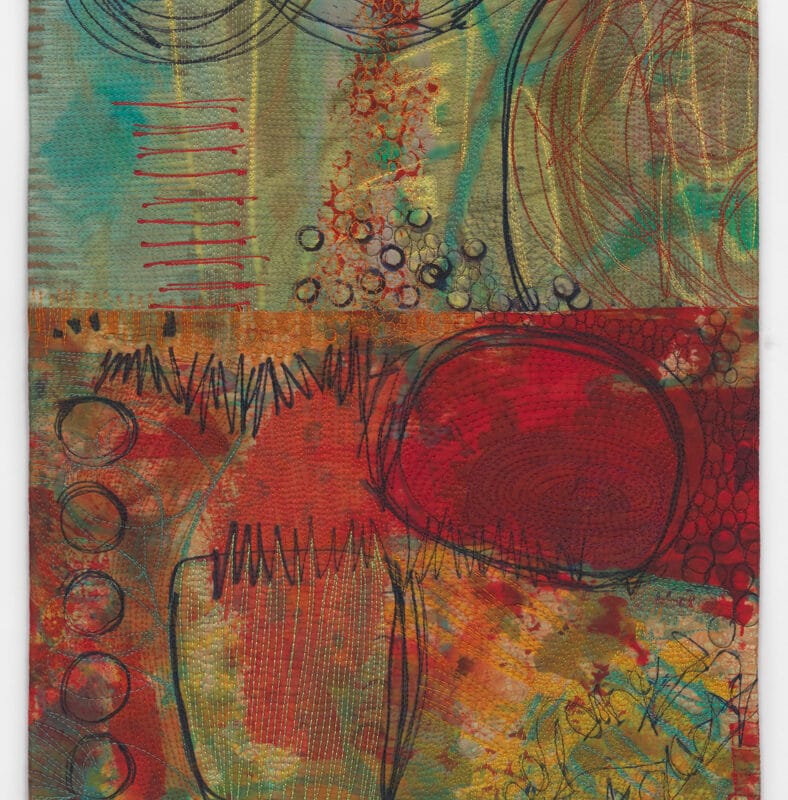“The content arises following the form”: The great abstract works of Karen Schulz
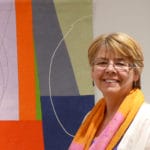
Textile artist Karen Schulz grew up and studied in the north-eastern United States and now lives in the Washington DC area. Her work has been exhibited in international competitions and solo and group exhibitions in the United States and abroad, obtaining numerous and coveted awards.
In her large abstract quilts, Karen creates compositions of considerable graphic impact dominated by an outstanding sense of balance between opposites, between repetition and alternation of forms and lines that follow one another with a rhythm that gives a refined and stimulating style to the work, thus capturing the attention of the viewer.
In this interview, the artist describesher years of education and the development of her career, exploring her point of view on the textile medium and its use as a tool of artistic expression.
Here is the link to the artist’s website
“Logjam”, 82′ X 88′, 2015, copyright Karen Schulz
The first steps
Can you tell us your story as a textile artist, how you started and why?
I learned to use a sewing machine at the age of 9 on my grandmother’s treadle machine. While I was always making things as a child, I was not the artistic one in the family. I did sew my own clothes throughout high school and college. Forty years ago I made my first quilt as a gift for a family member. I have always made my quilts with my own interpretations of patterns. About 20 years ago I stepped into the world of art quilts making work specifically for the wall. In the early 2000’s I began to think more seriously about quilts as an artistic medium. I took classes at the Quilt Surface Design Symposium and found a teacher. I happened to walk by her open classroom door and looked in (I was attending another class at the time). When I saw the very large black and white compositions covering the studio walls. I knew immediately this was for me. Thus began my years of study with Nancy Crow at her teaching facility in Ohio. Because quilt making is such a labor intensive endeavor I owed it to myself to invest in an education that would enable me to make the most beautiful quilts I was capable of, and there was much to learn.
At the time I had a part time private psychotherapy practice treating children and families, and two master’s degrees, one in human development and one in social work. I began to work full time in my studio, an addition built onto my home, and eventually closed my practice 6 years ago.
Turning point and artistic growth
Karen, in your journey to become a textile artist, was there an event or a person who proved to be important for your professional growth? Can you talk about it?
Certainly, my grandmother, who was an expert seamstress, was an important early teacher. She would make dresses for all her granddaughters and would blindfold us for the fittings, so as not to spoil the final reveal. Her passion for textiles was contagious.
Nancy Crow has been an invaluable teacher as she always calls her students to excellence, even before they believe they are capable of it. Her devotion to the medium has long been inspiring to a whole generation of artists.
An important event would be walking by that classroom as mentioned above. In 2010 I was fortunate to win Best in Show at a regional fiber exhibit whose prize was a solo exhibition in their beautiful venue, the Black Rock Center for the Arts in Gaithersburg, MD in 2011. It was such a thrill to see my work fill that glorious space.
How has your work evolved over time? What are the differences between your first and most recent artworks?
Over time my work has evolved enormously. I began by making quilts for the bed, then small representational pieces for the wall, then large abstract work. In the beginning I used only commercial fabrics and quilted by hand on a frame. I then began to use a table top machine, gradually using only solid colors, then only my own hand dyed solids, and currently I am exploring the world of surface design with thickened dyes and paints. I continue to use a table top machine and do all of my own quilting, free motion.
The transition from the study of the technique to the realization of the work of art
The artwork Juxstaposition is an important example of how to move from study to practice. In fact, when I asked the artist to tell us about her Juxtapositions Series, the answer was:
This series grew out of a mark-making design exercise done in a class with David Hornung. After experimenting with a variety of wet and dry mark making tools on 5X7” cards we then placed them side by side to make compositions. I took several of my finished compositions and interpreted them in cloth and stitch, exploring new color combinations along the way. The unplanned results surprised and delighted.
Improvisation, randomness, experimentation, study, rules, design. Which of these aspects has an essential or prevailing role in the creation process?
All of the various aspects you mentioned inform my work. Improvisation, randomness, experimentation, study, rules, design, they all play a role. Rules are helpful only as somewhat arbitrary parameters established by me. Depending on the piece various processes will be in the forefront.
“The content arises following the form”
When I asked Karen to tell us about “A Conversation”, the quilt that earned her the Best in Show at the Quilt National 2019, about how the idea for this work came about, she replied:
The seeds for this piece were sown in a class on Spare Composition I had taken at the Crow Barn. Using an acrylic painting I had done as a jumping off point, I chose two shapes to inform one of our many exercises. I came home from class and tossed my 12” X 12” squares onto my ironing board. The resulting spontaneous composition caught my eye. The negative space between the two shapes was of particular interest and the lined up edges of color provided an intriguing counterpoint. The title for the piece is informed by the idea of tension in spaces between and the dynamic between two forms approaching from opposite sides.
I go on asking to what content the shapes and lines skillfully drawn on the large geometric piece refer to:
My work is not content driven. Rather my work is driven by the shapes and lines themselves and not as symbols for something else. For me the content arises following the form. The lines are simply a crucial part of the formal composition. I like the way their hand drawn quality contrasts to the “smoother” lines of the sewn seams.
“A Conversation”, 50×67, 2018, copyright Karen Schulz
Let’s talk about the strengths and weaknesses of the textile medium
Each artist, during the creative process, inevitably clashes with the weaknesses that the technique and materials place. In Karen Schulz’s experience, what are the strengths and weaknesses of “textile” as a means of artistic expression?
One of the strengths of working in textiles is the relationship we as humans have to cloth. A relationship that spans our lives from birth to death. Personally my transitional object as a toddler was my blanket. The quilt has a history of connection to the bed and as such lends itself to making large work.
As with any medium, quilts also present certain challenges. Large work is very physical and requires long hours of sometimes quite tedious aspects. There are limits to all manner of working in cloth. For example, if one is limited to only piecing, making small work can be challenging. Unlike painting with oil or acrylic on canvas the artist cannot just paint over any parts that no longer work as a piece progresses. That being said with a recognition that the artist of any medium is working within the limits of his materials, it is precisely these limits that can help to inform the result, if the artist can embrace the limitations.
Are there any artists or artistic currents that inspire you?
There are many many artists whom I admire. Everyone from Rembrandt to Van Gogh to Cezanne, to Diebenkorn, to Andrew Wyeth to Franz Kline and Cy Twombly, and on and on. Currently I am quite taken with all the art that’s currently being done incorporating mark-making with mixed media.
Current and future projects
What are you working on right now?
I have spent some portion of my time in the studio over these last 2 ½ years exploring more expressive mark making using mixed media on paper. As such I am preparing for my first exhibition of my paintings coming up this October.
In terms of my textile work I am continuing to investigate various surface design techniques in the service of composition. I am slowly quilting two large finished compositions and working in the wet studio on several new ones.
“Mixed Messages”, 67′ X 70′, 2019, copyright Karen Schulz
